There are 25 publicly funded statues of colonial figures in Sydney but none Indigenous people
>
Indigenous artists and activists are furious at the lack of representation in Sydney’s public art scene with all 25 statues honoring British settlers but none celebrating First Nations historical figures.
Publicly funded statues of colonial figures celebrated throughout the city include Captain Cook, Governor Arthur Philip, Queen Victoria and her dog, Lachlan Macquarie, and explorer Matthew Flinders with his cat Trim.
However, there is not a single statue on public land commemorating a First Nations person.
Wiradjuri woman and Metropolitan Aboriginal Land Council vice-chair, Yvonne Weldon, said tourists would be forgiven for thinking there was no one in Australia before the British.
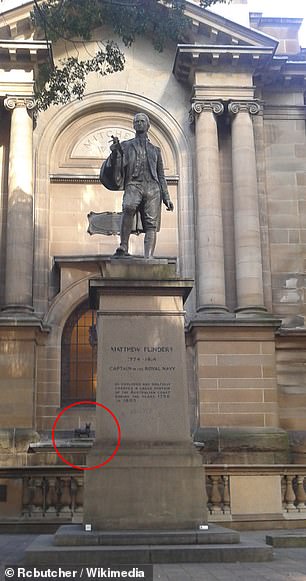
There are 25 publicly funded statues of colonial figures in Sydney’s CBD, including Captain Cook (left), in Hyde Park, and Matthew Flinders with his cat Trim (right), in Macquarie St.
Cr Weldon, who is also an independent Sydney city councillor, has campaigned for a statue to commemorate indigenous historical figure Patyegarang for his role in preserving the Gadigal language, a proposal the council has twice rejected.
The 15-year-old Gamaraigal woman formed a strong bond with First Fleet naval officer Lieutenant William Dawes, sharing with him the cultural knowledge and language of her people.
Lieutenant Dawes recorded their conversations in a notebook, which is recognized as the oldest recorded first-hand account of the Gadigal language.
Cr Weldon told Daily Mail Australia she was “shocked and heartbroken” by the opposition to the proposed Patyegarang statue and claimed the town wants to hide First Nations history rather than promote it.
“You have so much history represented in a non-First Nations sense and it’s disappointing,” said Cr Weldon.
‘To have Patyegarang represented, what he gave was a gift of the language of Sydney, and it is used today. It is practiced in many places and often in speeches.
‘Dawes Point bears his name [Lieutenant Dawes] and he is mentioned in the story. Whereas Patyegarang is more of an afterthought. As a young woman from Gadigal who risked so much the lives of her people, her life must be represented.
“She should be standing on a statue because her story is important, it was then and it is important now and it should be important in the future.”

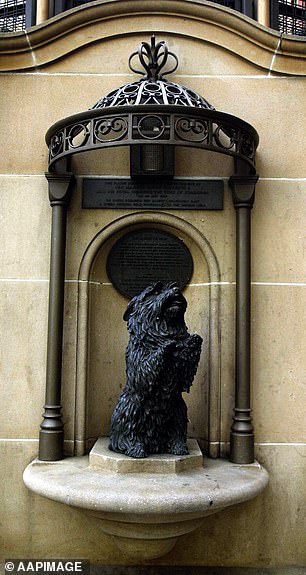
Despite the role indigenous historical figures played in the first decades of European settlement, there are no statues commemorating First Nations people on public land in Sydney (pictured, statues of Queen Victoria, left , and her dog, right, in the Queen Victoria Building). )
Cr Weldon, who was the first Aboriginal councilor in the city’s 180-year history, claimed that the City of Sydney ‘handpicked’ the responses before rejecting his proposal.
“They compared to get the answers they wanted to hear rather than what they had been told,” he said.
‘I put it up to have a statue commemorating Patyegarang and Mayor Clover Moore used her casting vote to vote it down. She feels that it was her right.
“The city is her domain as mayor and my views are probably not as valid as hers, I think probably in her eyes.”
Instead, the city of Sydney erected the ‘bara’ sculpture by Waanyi artist Judy Watson. – a traditional fishhook made and used by the women of Gadigal for thousands of years.

This statue of indigenous rights activist Mum Shirl is in St Vincent de Paul Church in Redfern; however, it was privately commissioned and stands on church grounds.
Cr Weldon said the installation, while beautiful, does not have the same effect as a statue.
“It may not inspire a young Aboriginal man in the same way that a statue of someone who looks like him would,” said Cr Weldon.
‘My people are here and we have always been here. But visitors don’t see that, they just see fish hooks, traditional art and other symbols.
“If you don’t have statues representing First Nations people, then we become figments of people’s imaginations, which we definitely are not.”
Daily Mail Australia has contacted Mayor Clover Moore for comment.
An exception in Sydney is the statue of indigenous rights activist Mum Shirl at St Vincent de Paul Church in Redfern.
However, that statue was privately commissioned and sits out of sight on land owned by the Catholic Church.
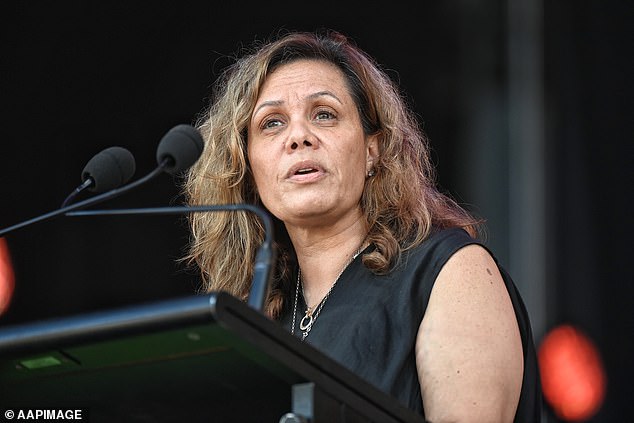
Metropolitan Local Aboriginal Land Council Vice-Chairperson Yvonne Weldon (pictured) actively campaigned for a statue to commemorate 15-year-old Gamaraigal woman, Patyegarang.
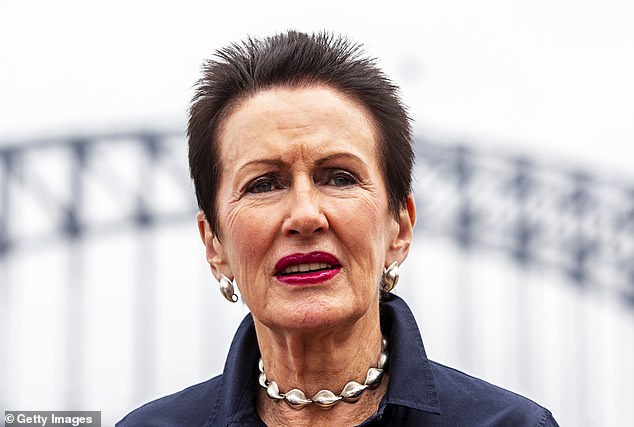
Cr Weldon said Mayor Clover Moore (pictured) has turned down a proposal for a Patyegarang statue on two occasions.
Sydney muralist Tim Guider told Daily Mail Australia he was forced by the city of Sydney to “jump through hoops” to get approval for a site to paint murals of First Nations people.
Guider removed his mural in the inner western suburb of Petersham, which depicted an indigenous Australian youth in custody, to make way for Australia’s first public art rendering of Bennelong and Barangaroo.
“It was sad to remove a mural, but it was the only way I could do it because if I asked, the answer would have been no,” he said.
‘Bennelong and Barangaroo deserve to be admired and I think we should admire them more than the English who came.
“I want to see those faces on the walls so that people say ‘wow, who is that’ and for Aboriginal people to look and feel proud to come from those ancestors.”
Husband and wife and leaders of the Eora people, Bennelong and Barangaroo were communicators and mediators between their people and the British in the late 18th and early 19th centuries.
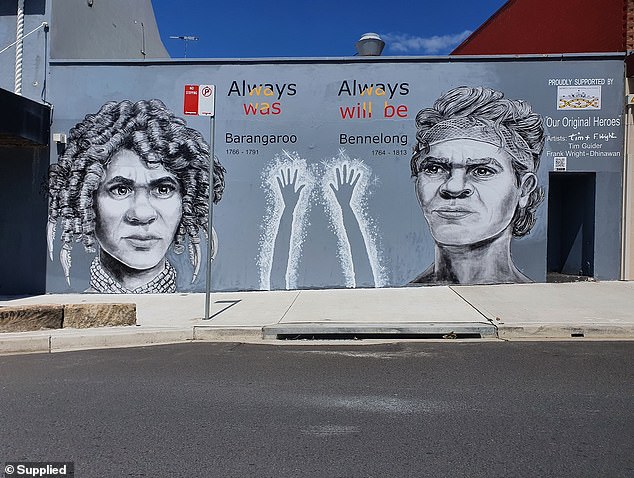
Sydney muralist Tim Guider painted the first public art depicting husband and wife and the leaders of the Eora, Bennelong and Barangaroo people, in Sydney’s western suburb of Petersham.
The bronze statue busts of the couple were unveiled in 2021, but are situated on private land, framing the doorway of St Patrick’s Catholic Church in The Rocks.
Mr. Guider’s mural, titled ‘Our Original Heroes’, features portraits of Bennelong and Barangaroo separated by spirit hands painted by indigenous artist Frank Wright.
Guider said the title was a pun on the Latin prefix ‘ab’, meaning ‘far from’ or ‘not’, giving the Aboriginal word the meaning of ‘non-original’.
“I don’t think our government is deliberately suppressing Aboriginal people today, but they have taken away the ability to look up to the ancestors of the past,” he said.
“If you don’t allow a race of people to have their own heroes from the past, they will feel like second-class citizens.
“This mural, in essence, to me is about that missing part of our culture, and I’m doing everything I can to preserve it and the government can’t stop me.”
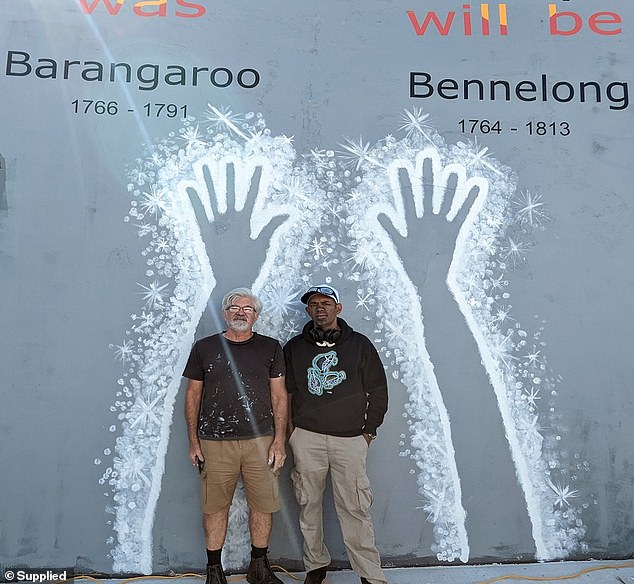
Mr. Guider’s mural (left), titled ‘Our Original Heroes’, features portraits of Bennelong and Barangaroo separated by spirit hands painted by indigenous artist Frank Wright (right)
Mr. Guider wants to replicate these heroic images in Sydney and in cities across the country and hopes Australian businesses will sponsor his work.
Thousands of people will march in Invasion Day rallies across the country on January 26.
In recent years, statues of colonial figures have been vandalized during Invasion Day demonstrations and Black Lives Matter protests.
This year, protesters will protest against the federal government’s plan to hold a national vote on the introduction of an advisory body for aboriginal affairs into the constitution.
Australians will likely be able to vote in the Indigenous Voice referendum to Parliament from August.
Cr Weldon said the referendum was a positive “start”, but not the solution to deeper problems, including the erasure of First Nations history and cultural perspectives from the public domain.
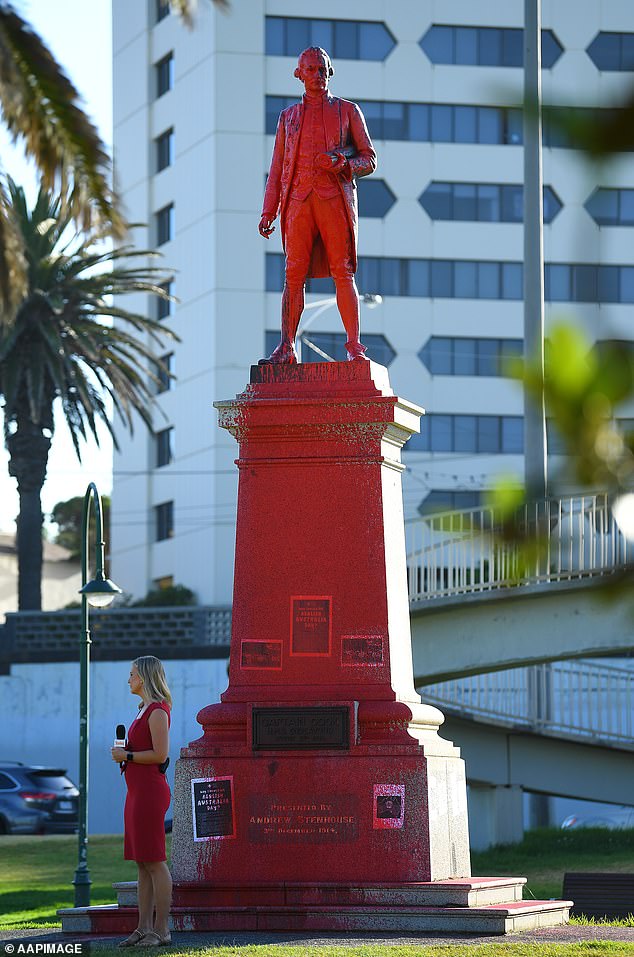
The Captain Cook monument in St Kilda, south-east Melbourne, was vandalized with red paint during the Invasion Day protests in 2022.
